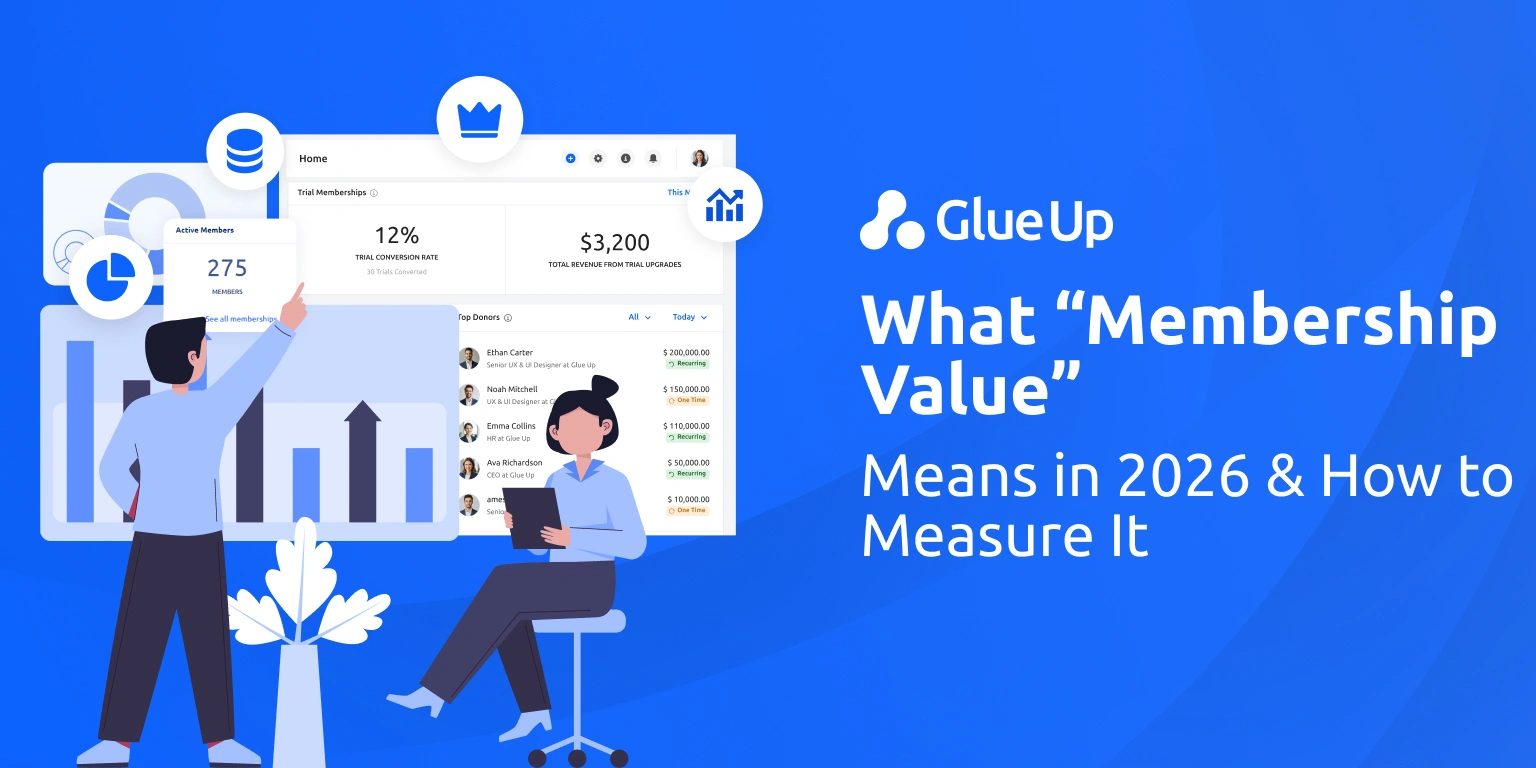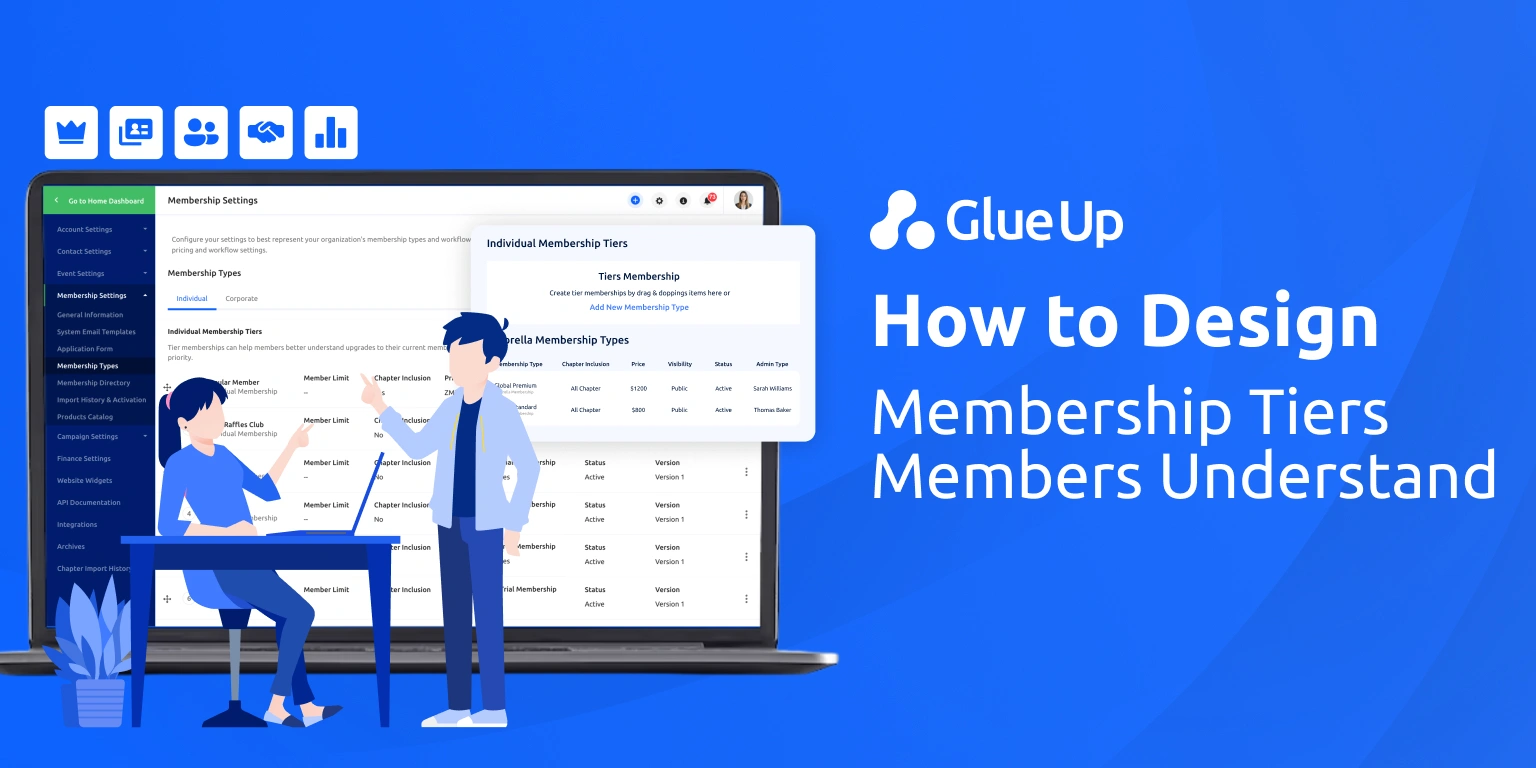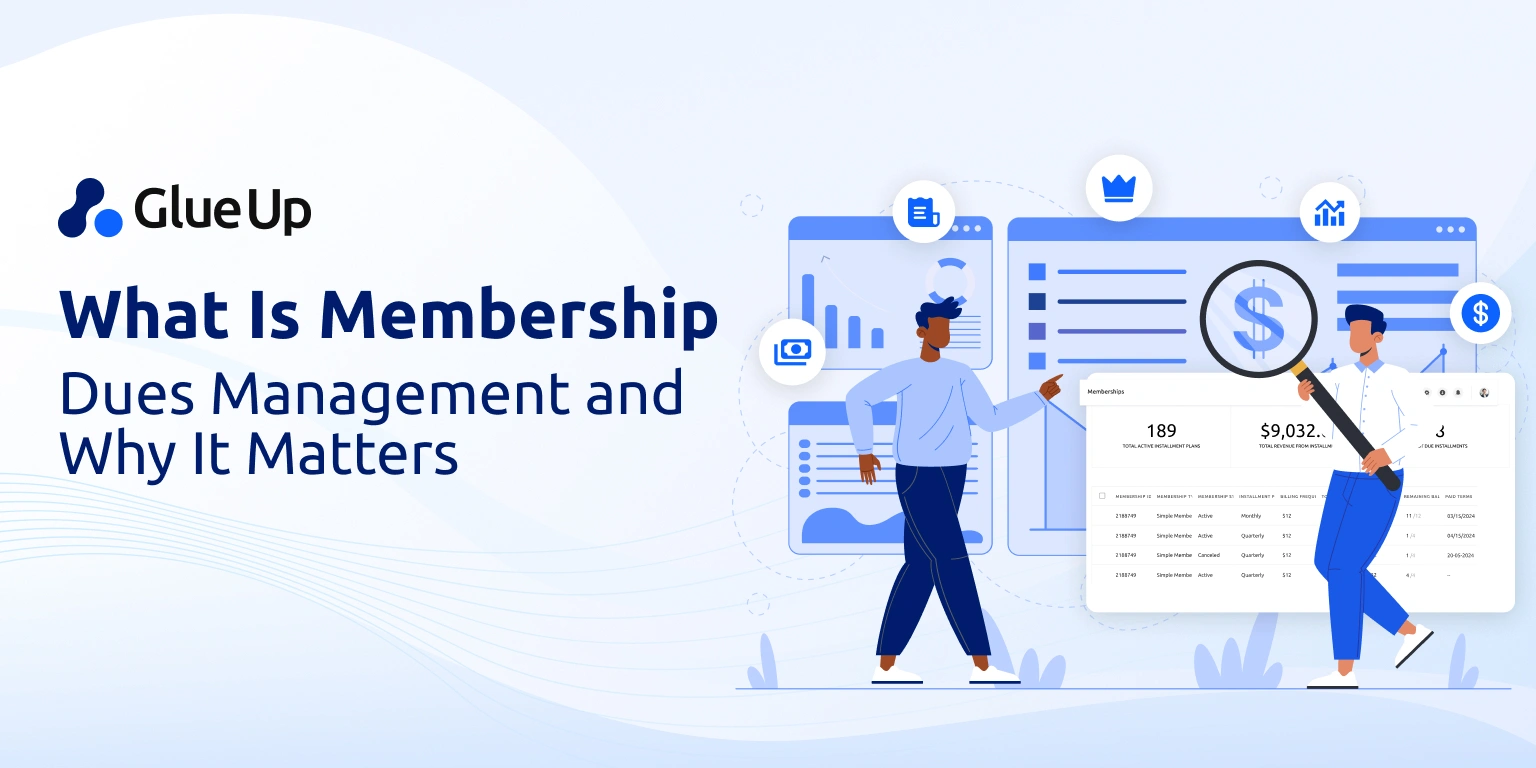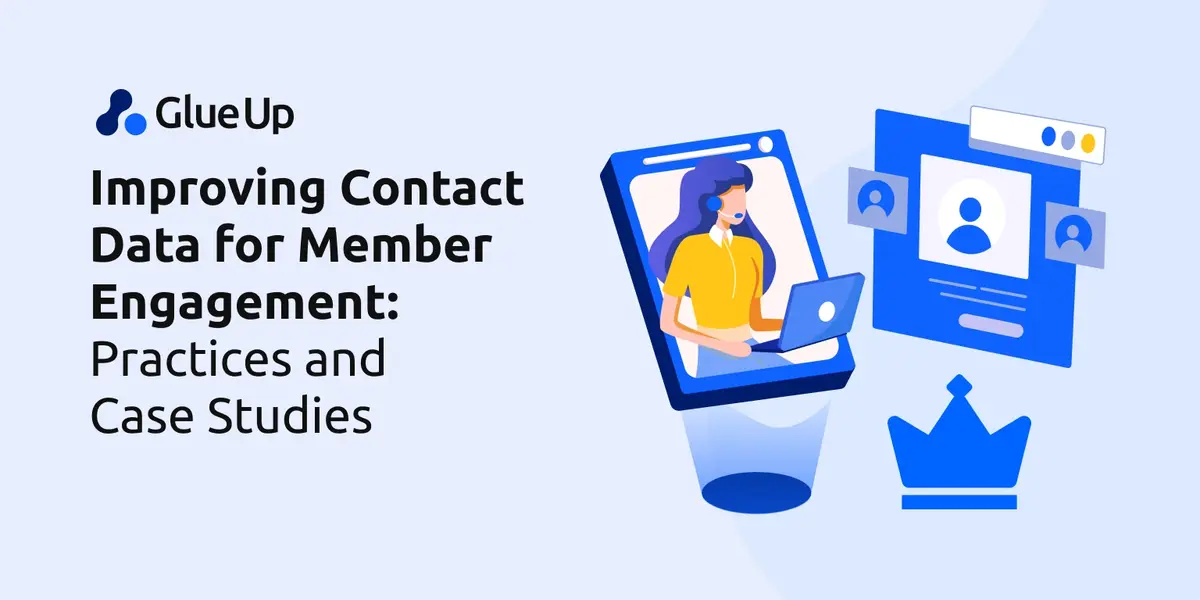
Accurate contact information enables you to communicate effectively, tailor your offerings, and foster relationships with your members. However, maintaining high-quality contact data is a significant challenge, as studies indicate that incorrect or missing contact data are the leading barriers to engaging customers or members.
Organizations with robust data management practices have reported generating up to 66% more revenue than those with poor data quality strategies (Gartner).
This not only highlights how important collecting contact data is but also why its accuracy and privacy are important for membership organizations.
Key Takeaways
- High-quality contact data is crucial for effective member communication and engagement. Organizations with robust data management practices can generate up to 66% more revenue than those with poor data quality strategies.
- Maintaining accurate contact data is a significant challenge for 73% of organizations. Common issues include outdated records, data fragmentation across multiple systems, and balancing data collection with privacy concerns.
- Prioritizing data privacy is essential for building and maintaining member trust. Organizations must be transparent about their data practices to foster stronger relationships and reduce attrition rates.
- Key strategies for improving contact data include regular cleansing, self-service update portals, data validation tools, and comprehensive governance policies. Creating preference centers for communication preferences is also crucial for effective engagement.
- Using an all-in-one membership management software can significantly improve data quality and protection. It provides a centralized database and automates maintenance tasks, helping organizations overcome challenges in contact management and member engagement.
The Challenges of Maintaining Quality Contact Data

Keeping contact data current and accurate presents several challenges for membership organizations.
73% of organizations report that maintaining accurate contact data is a significant challenge. Additionally, over 25% of organizations have to manage between 1,000 to 9,999 data sources, which significantly contributes to data fragmentation issues (Data Center Catalog) (Informatica).
Members frequently change their contact information without notifying the organization, leading to outdated records and failed communication attempts. Additionally, the proliferation of communication channels and devices has made it increasingly complex to maintain a unified view of each member's preferred contact methods.
Another significant challenge is data fragmentation.
Many associations store contact information across multiple systems or departments, resulting in inconsistencies and duplicate records. This fragmentation not only hampers effective communication but also increases the risk of data breaches and privacy violations.
The Role of Data Privacy in Member Trust
With the increase in data breaches, people are becoming more cautious about sharing their personal information. Organizations that fail to prioritize data privacy risk losing the trust of their members, which can lead to decreased engagement and higher attrition rates.
McKinsey & Company noted that data privacy has become imperative as organizations face increasing pressure to embrace digital technologies and meet evolving consumer expectations. Effective data management and privacy are integral to building trust and maintaining customer relationships.
Thus, organizations must communicate how they collect, use, and protect member data, and provide easy opt-out options for various communication channels.
Best Practices for Improving Contact Data

The following best practices offer a comprehensive approach to collecting, verifying, and managing contact information, ensuring that your organization can communicate effectively and provide personalized experiences.
- Implement a regular data cleansing process to identify and correct inaccuracies in your contact database. This should include removing duplicate entries, standardizing formats, and verifying the validity of email addresses and phone numbers.
- Encourage members to update their contact information through self-service portals or periodic prompts. In addition to improving accuracy, empowering members to manage their data also demonstrates respect for their privacy preferences.
- Utilize data validation tools to verify the accuracy of new contact information at the point of entry. These tools can help catch typos, formatting errors, and invalid entries before they make their way into your database.
- Develop a comprehensive data governance policy that outlines how contact information should be collected, stored, and used across your organization. This policy should include guidelines for data access, security measures, and retention periods.
- Implement a preference center that allows members to specify their communication preferences and preferred contact methods. Respecting these preferences can lead to more effective engagement and higher response rates.
- Conduct regular data audits to identify gaps in your contact information and assess the overall quality of your database.
- Invest in staff training to ensure that everyone handling member data understands the importance of accuracy and privacy. Regular training sessions can help reinforce best practices and keep data quality top of mind.
- Implement a system for tracking returned mail and bounced emails to quickly identify and update invalid contact information. This proactive approach can help prevent communication gaps and improve overall data quality.
- Expand your member profiles by incorporating additional relevant information like job titles, industry affiliations, and interests. This enriched data enables more targeted communication and personalized offers.
- Establish a process for handling data subject access requests and deletion requests in compliance with data protection regulations. This demonstrates your commitment to member privacy and helps build trust.
- Implement data encryption and secure storage practices to protect member contact information from unauthorized access or breaches. Regularly review and update your security measures to address evolving threats.
- Develop a data quality scoring system to prioritize which records need attention and track improvements over time. This can help you allocate resources more effectively and demonstrate the value of your data improvement efforts.
Leveraging Membership Management Software for Improved Contact Data
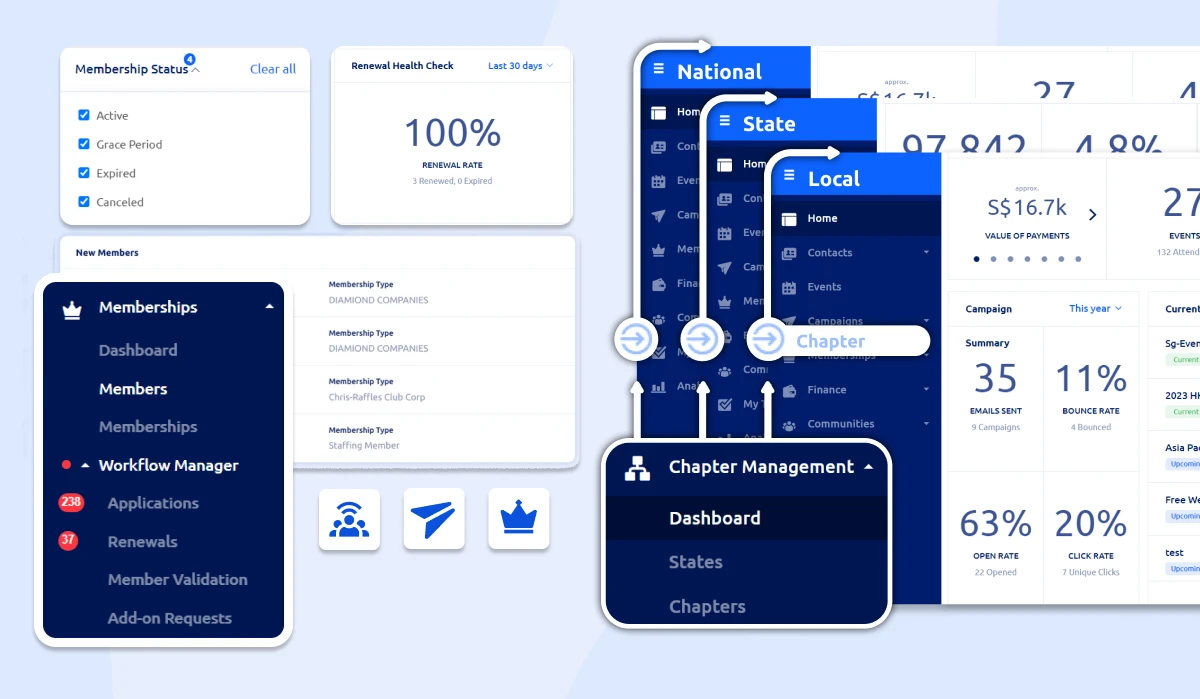
Using different software solutions for various aspects of membership management can inadvertently lead to data protection breaches, as sensitive information may be scattered across multiple platforms with varying security measures.
A robust membership management software like Glue Up addresses this concern by consolidating all workflows into a single, secure system, offering a distinct advantage in data protection and compliance. Glue Up’s membership management software provides a centralized database that serves as a single source of truth for member information, reducing the risk of data fragmentation and inconsistencies.
It also includes features specifically designed to improve data quality and streamline engagement efforts, all while maintaining robust security protocols.
Another key advantage is its ability to automate many data maintenance tasks.
For example, it can help you manage memberships, engage members, create events, and track data - all within one platform. This automation not only saves time and resources but also ensures a more consistent and thorough approach to data quality management.
Here are some examples from well-known member-based organizations that consolidated their tech and improved contact data with Glue Up’s membership management software.
Case Study 1: British Chamber of Commerce Singapore (BritCham Singapore)
BritCham Singapore faced challenges with data duplication and mismatching in their growing contact database. They implemented Glue Up's all-in-one Chamber of Commerce management software to address these issues. The new system's CRM module consolidated their entire database, eliminating multiple lists and duplicate contacts.
The platform's integrated tools, including event management and email campaigns, automatically fed data back into the central CRM, keeping contact information current.
This allowed BritCham Singapore to effectively segment contacts, target communications more precisely, and gain valuable insights from member interactions.
The result was a significant improvement in their overall membership engagement and data management.
Read the full case study here.
Case Study 2: OBN
OBN is a membership organization supporting and bringing together the UK's emerging life science companies, corporate partners, and investors.
They adopted Glue Up's all-in-one software, which centralized their contact management and allowed for easy segmentation for targeted campaigns and events.
Using this consolidated approach, their team could check member engagements in the form of email open rates, attended events, renewals, and membership status. As a result, OBN improved its strategies and operational decision-making across its expanding network.
Read the full case study here.
Improving your contact data is a crucial step in enhancing member engagement and driving your organization's success.
By implementing the best practices outlined in this article and leveraging Glue Up’s advanced membership management software, you can overcome the challenges of maintaining high-quality contact data.
For more information on how Glue Up can benefit your organization and how it can turn your contact data into an invaluable asset for member engagement, schedule a free demo here.
Remember, accurate and well-managed contact information is not just about keeping records up to date—it's about building trust, personalizing your member interactions, and ultimately creating a more engaged and loyal membership base!

